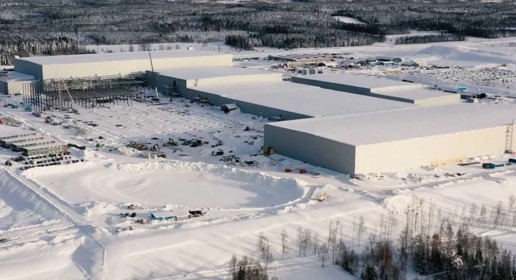
PrīmX Concrete Technology for Enhanced Automated and Robotic Manufacturing Infrastructures
Industrial automation and robotics is revolutionizing manufacturing operations. Projections indicate that nearly 50% of all manufacturing processes will be fully automated by 2025. This paradigm shift demands a closer look at the crucial role played by the infrastructure in supporting these cutting-edge technologies.
With the rise and advancement of automated technologies that perform physical task completion, there is an inevitable increase in operations speed and precision. Putting it very simply - operations must be performed with an increased speed that asks for precision and stability in everything. In this sense, buildings must provide a stable platform for these technologies to operate at their peak performance.
What is the Significance of Smart Technologies on Infrastructures
As automated technologies, designed to execute physical tasks with precision and speed, become more popular, the stability and reliability of the infrastructure they operate on become critical. In the majority of cases, concrete flooring is the foundation for smart technologies.
What are the essential concrete flooring requirements for infrastructure of manufacturing automation
Higher Load Capacity: Manufacturing companies impose heavy static and dynamic loads, often necessitating robust infrastructure to support heavy technological equipment like rail-mounted machinery.
Stability and Rigidity: Automated technologies rely on stability and precision, demanding floor slabs that remain rigid and free from movement. The connection points (nodes) must also accommodate various technologies securely.
Future Flexibility for Upgrades: In today's fast-paced environment, adaptability is key. Infrastructure should support potential upgrades and technological changes which means that the floors need to be jointless, rigid slab providing full flexibility for technology and load placements in the future.
Flat Surface: A flat floor surface is vital for units traversing the floor, including AGVs, AMR robots, and more, ensuring optimal conditions for these technologies throughout their service life.
Sustainability: Modern manufacturing emphasizes CO2 reduction and environmental responsibility. Consequently, both the construction and operation of the building must align with sustainable practices. Specific surface finishing and liquid-tight solutions are also essential.
These properties are practically impossible to achieve with traditional concrete structures due to its major drawback as a construction material - shrinkage.
Why PrīmX Concrete Technology is an Ideal Partner:
- Dimensional Stability: PrīmX (SFRSSC) Steel Fiber Reinforced Self-Stressing Concrete delivers a remarkably stiff slab, establishing a robust and durable platform for heavy, precision automated systems. It also eliminates the adverse effects of drying shrinkage, making PrīmX chemically tensioned concrete is stronger and has more load-bearing capacity than traditional concrete of equal thickness.
- Lifetime Flatness: PrīmX slabs remain flat after casting and maintain this flatness throughout their lifespan. This ensures no slab movement or curling, reducing the need for technology adjustments and extra calibrations.
- Jointless Design for Full Flexibility: PrīmX's stiff construction enables optimal load placement, eliminating weak points caused by saw cuts or joints. This design approach reduces post-construction defects and maintenance issues.
- Reduced CO2 Emissions and Environmental Impact: PrīmX employs optimized design practices, reducing cross-sections and utilizing environmentally-friendly materials. This results in significant CO2 savings, as well as efficiency gains from optimized processes, including reduced transportation requirements and construction time.
- Faster Construction: The substantial decrease for steel bar reinforcement in the floors and more efficient and productive construction techniques lead to faster construction timelines and enhanced overall efficiency in the building process. Also Prīm X SFRSSC offers the advantage of being ready for use in just 14 days after pouring. Unlike traditional concrete floors, which necessitate a 28 day curing period. PrīmX lets you get your facility up and running faster.
-
Cost Efficiency: PrīmX offers cost benefits through optimized slab design, simplified construction, shorter construction timelines, and an overall reduced schedule.
Incorporating PrīmX concrete technology into manufacturing infrastructure ensures stability, durability, and efficiency, aligning perfectly with the evolving demands of automated and robotic manufacturing processes.